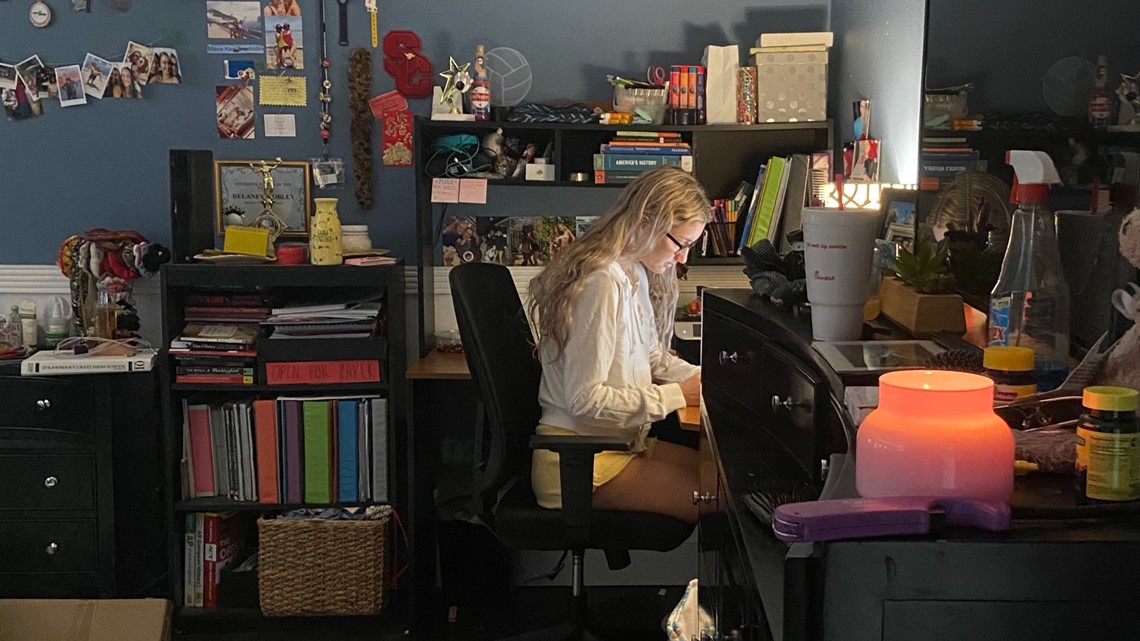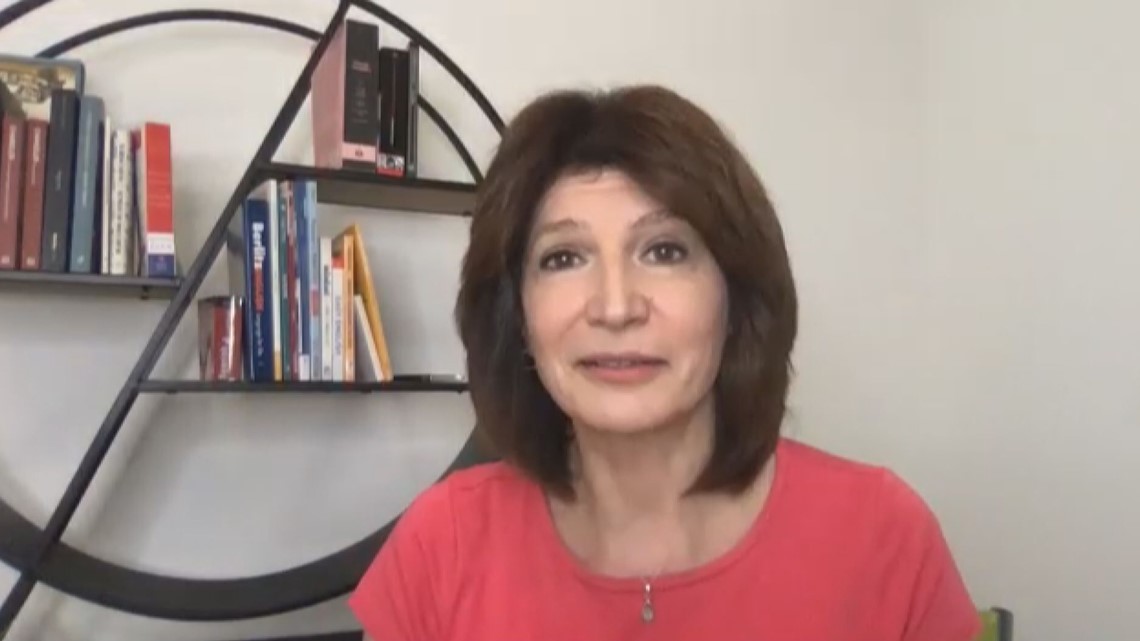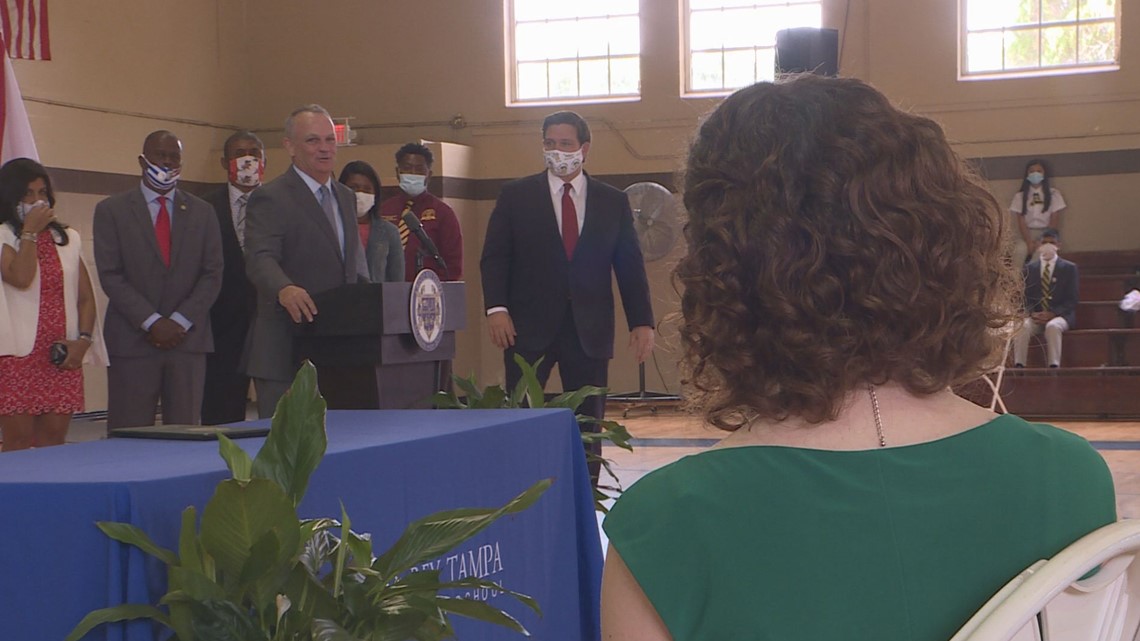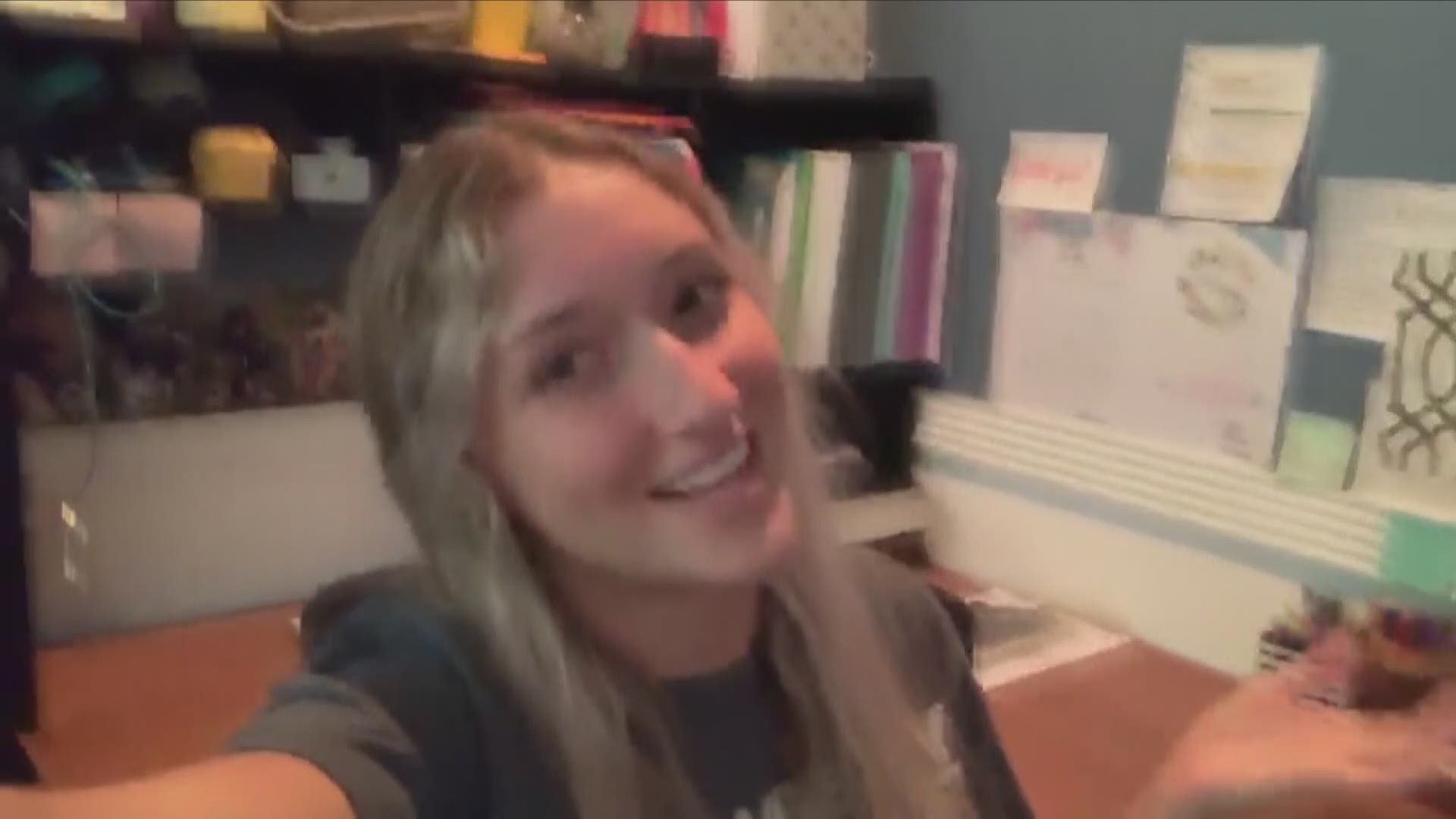TAMPA, Fla. — This story is the latest installment in our YouTube series, "What's Brewing,” investigative reporter Jenna Bourne's series of homemade deep dives into important issues during the coronavirus pandemic. Click here to check out the series and subscribe to our new YouTube channel: The Deeper Dive.
“This is my new at-home classroom,” Strawberry Crest High School senior Delaney Mobley says with a smile.
She’s showing off her desk at home. Her shelves are piled high with books and binders, decorated with photos of friends from a time when social distancing wasn’t necessary.
It’s been about five months since COVID-19 forced students out of classrooms.
“All of the sudden, everything is gone. It’s out the window. We have no idea what to do. And the teachers have no idea,” said Mobley.
Mobley says she can sum up the transition to e-learning in one word: “Messy.”
She says technology was one of the biggest issues, specifically, access to digital learning platforms like Edsby.
“When you log onto Edsby, the first week or two, everyone was on Edsby at the same time. And so Edsby was crashing every other day. That made turning in things difficult,” said Mobley. “I don’t think [schools] had any idea of what to do, like, if we were going to be at home for a while. And they weren’t prepared for it lasting this long.”


Did schools have plans for a pandemic?
In early April, 10 Investigates sent public records requests to the Florida Department of Education and Tampa Bay’s 10 school districts, asking for any written pandemic plans they had before the COVID-19 outbreak.
These plans can show the public how prepared schools were – or weren’t, whether they wound up following their plans, and whether they had plans at all.
The responses we got were all over the place.
Some refused to send us their plans. Some had no plans. Some had plans, but they hadn’t been updated in more than a decade.
Before we take a deeper dive into the local level, let’s tackle the state plan.
We have a plan, we just can’t show it to you
10 Investigates first reported in May the Florida Department of Education refuses to release the plan it claims to have had prior to the COVID-19 pandemic.
The department says it falls under its Continuity Of Operations Plan, known as a COOP for short.
Basically, it’s a plan Florida agencies are required to have to continue operations during any emergency, which supposedly includes pandemics.
But the state won’t send it to us because they say it falls under a “security and fire safety” exemption in Florida’s public records law.
We asked a public records expert to weigh in.
“The statute that talks about the fire and security plan is very specific. It says it includes records relating directly to the physical security or fire safety of the facility, or revealing security or fire safety systems. That’s not what you’re asking for,” said Florida First Amendment Foundation President Pamela Marsh.
Of course, we don’t want to reveal information that would put anyone’s safety at risk.
That’s why we’ve asked the Department of Education multiple times to redact any part of the plan that reveals “security and fire safety” information and send us the rest.
They still won’t do it.
“We have a plan, we just can’t show it to you? I think we need to be really honest with each other now,” said National Education Association President Lily Eskelsen García.


Major decision-makers in our state when it comes to education haven’t seen the plan either.
The chair of the State Senate Committee on Education, State Senator Manny Diaz, Jr., hasn’t seen the state’s plan.
“Well, I don’t have the document in my hand. What I have is gone over summaries and major points,” said Diaz, a Republican representing the state’s 36th district in Miami-Dade County.
Florida Education Association President Fedrick Ingram hasn’t seen the state’s plan either.
“Well, it’s tough. And that’s unfortunate for those in leadership – our governor, our commissioner of education. I think those folks have to answer for that,” said Ingram.
“Those folks have to answer for that”
The Florida Department of Education didn’t respond to 10 Investigates reporter Jenna Bourne’s multiple requests to interview Education Commissioner Richard Corcoran.
At one of the governor’s recent news events in Tampa, Bourne asked Corcoran if he’d talk on camera about his office’s refusal to release the plan, among other issues.
“If you want to get me right after [the news conference], it would be better,” said Corcoran. “Yeah, I’ll be around.”
During the news conference, Bourne asked Gov. Ron DeSantis about the Department of Education’s refusal to release its plan to the public. DeSantis did not answer, instead passing the question to Corcoran.
“Richard, you want to take that?” DeSantis asked Corcoran.
Corcoran took DeSantis’ place at the podium.
“You’ve reached out to us several times. My office has communicated with you very clearly that the pandemic plan – in it, is what we strategize on how to keep our school children safe. And it is not a public record. And if you’d like, we’ll get you the statute, we’ll get you the general counsel,” said Corcoran. “It’s about school safety and it’s about protecting children.”


After the news conference, Corcoran left out a side door.
“Mr. Corcoran, don’t you think that the public has a right to know about their plans for schools?” Bourne asked Corcoran in the parking lot.
He did not answer any further questions.
A patchwork of pandemic plans
“I think putting too much into what the state overall plan [was] misses the mark, because you’re going to have 67 different plans, to be honest with you,” said Diaz the next day.
He’s not exaggerating.
10 Investigates found that, prior to the COVID-19 outbreak, Tampa Bay’s 10 school districts had a patchwork of pandemic plans:
- CITRUS: Citrus County Schools had a pandemic plan, a one-page document from 2014. The plan doesn’t include what to do if a virus forces students to learn from home instead. In fact, it says to “combine classes if large amounts of students and staff are absent.” A spokesperson told us, “Obviously we are expanding our plan due to our current worldwide situation.”
- HARDEE: Hardee County Schools did not have a formal pandemic plan. A spokesperson told 10 Investigates the district now plans to create one, informed by “the experience we are gaining now dealing with COVID-19.”
- HERNANDO: Hernando County School District says it uses a Department of Health Biological Incident Plan. The Florida Department of Health’s Disaster Planner in Hernando County told 10 Investigates that plan was not public record, citing the same exemption as the Florida Department of Education.
- HIGHLANDS: The School Board of Highlands County did not have a pandemic plan prior to the COVID-19 pandemic. After the outbreak in the spring, the district developed a plan, heavily borrowing from another district. It is still in “edit format” and has not been approved by the board. The district and board are focusing their efforts on their re-opening plan for now.
- HILLSBOROUGH: Hillsborough County Public Schools has an eLearning Contingency Plan and Operations Contingency Plan. It’s unclear exactly which parts existed prior to COVID-19. A spokesperson told 10 Investigates, “We have had a number of plans or criteria in place over time related to sicknesses and outbreaks including H1N1 and the seasonal flu.”
- MANATEE: Like the Florida Department Education, the School District of Manatee County refused to send 10 Investigates its pandemic plan, claiming it’s not a public record. They did tell us their plan was created in 2006 and remained untouched until April 2020.
- PASCO: Pasco County Schools sent us a detailed, nine-page pandemic plan, but it’s unclear how much of it existed prior to COVID-19. A spokesperson told us most of it was created in February.
- PINELLAS: Pinellas County Schools developed an Infectious Disease Incident Preparation and Response Plan about 10 years ago when H1N1 was an issue. Although it mentions closing schools in the case of a “widespread” outbreak, it doesn’t mention plans for virtual learning.
- POLK: Polk County Public Schools had an “influenza pandemic response plan” that was created in 2007 and updated February 28, 2020. The district posted its Instructional Continuity Plan, FAQs and additional community resources here.
- SARASOTA: Sarasota County Schools didn’t have a written plan. A spokesperson told 10 Investigates, “It’s in progress.”
This patchwork of plans led to different outcomes for students depending on their zip codes.
“In the more rural places where we had issues with connectivity and – really, they had to kind of pivot to distance learning packets and things of that nature. We had other districts that did an incredible job,” said Diaz.
“We’ve never dealt with anything like COVID-19,” said García. “So, I don’t want to throw rocks at people and say, ‘Well, you should have imagined that this happened in some parallel universe.’ But let’s just take what we could have done this time.”
So, where do schools go from here?
All summer, each school district has been scrambling to figure out the plan for this new school year.
“Every state, every community, sometimes even to individual schools, are trying their best to figure it out. It doesn’t have to be this way. It didn’t have to be this way,” said García.
And Sen. Diaz said there needs to be more uniformity in the future.
“I think that there’s some structure and skeleton that needs to exist so that individual districts can make these decisions, and cater them specifically to their community,” said Diaz.
In the meantime, Mobley says she’s been stressing out about her senior year all summer.
“It’s been super nerve-wracking,” said Mobley. “It’s such an unprecedented time and no one really knows what’s going on.”
10 Investigates will keep you posted as we continue to push for the Florida Department of Education’s pandemic plan to be made public for you.




